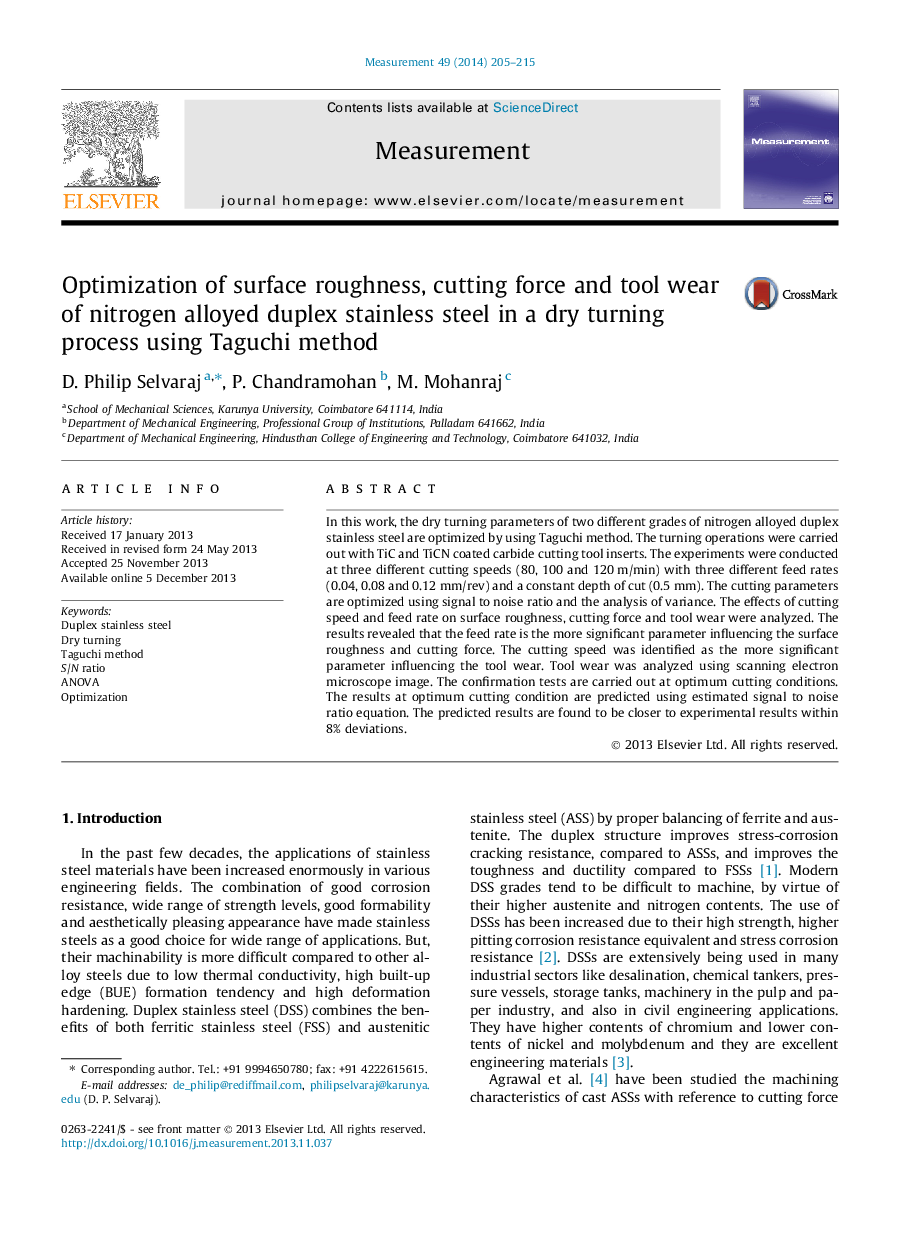| کد مقاله | کد نشریه | سال انتشار | مقاله انگلیسی | نسخه تمام متن |
|---|---|---|---|---|
| 727392 | 1461538 | 2014 | 11 صفحه PDF | دانلود رایگان |
• Cutting speed, 100 m/min and feed, 0.04 mm/rev gave the lowest surface roughness.
• Feed and cutting speed affected the surface roughness by 64% and 31%, respectively.
• Feed rate and cutting speed affected the cutting force by 53% and 45%, respectively.
• Cutting speed and feed rate affected the tool wear by 92% and 7%, respectively.
• Tool wear was due to abrasion at lower speeds and due to diffusion at higher speeds.
In this work, the dry turning parameters of two different grades of nitrogen alloyed duplex stainless steel are optimized by using Taguchi method. The turning operations were carried out with TiC and TiCN coated carbide cutting tool inserts. The experiments were conducted at three different cutting speeds (80, 100 and 120 m/min) with three different feed rates (0.04, 0.08 and 0.12 mm/rev) and a constant depth of cut (0.5 mm). The cutting parameters are optimized using signal to noise ratio and the analysis of variance. The effects of cutting speed and feed rate on surface roughness, cutting force and tool wear were analyzed. The results revealed that the feed rate is the more significant parameter influencing the surface roughness and cutting force. The cutting speed was identified as the more significant parameter influencing the tool wear. Tool wear was analyzed using scanning electron microscope image. The confirmation tests are carried out at optimum cutting conditions. The results at optimum cutting condition are predicted using estimated signal to noise ratio equation. The predicted results are found to be closer to experimental results within 8% deviations.
Journal: Measurement - Volume 49, March 2014, Pages 205–215
